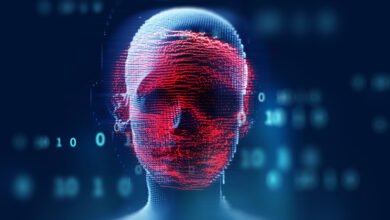How CISOs Master Risk, Pressure & Board Demands

▼ Summary
– Generative AI is a top security concern for CISOs, with many worried about data leaks through public tools, but organizations are implementing guardrails rather than blocking AI outright.
– CISOs are exploring AI as a defensive tool to prevent human error and respond to threats, though fewer now view it as a transformational solution, shifting focus to balancing innovation with governance.
– Human behavior remains the top vulnerability, with insider threats, mistakes, and compromised accounts driving most data loss incidents, despite existing prevention technologies and training.
– Alignment between CISOs and boards has declined, with fewer CISOs feeling understood by their boards, though boards are increasingly focused on the business and financial impact of cyberattacks.
– CISOs face excessive expectations, personal accountability, and burnout, with many lacking adequate resources and support, though some organizations are implementing safeguards against personal liability.
Artificial intelligence now dominates the strategic priorities of Chief Information Security Officers, presenting both unprecedented opportunities and complex challenges. Three in five CISOs now classify generative AI as a significant security risk, particularly concerning the potential leakage of sensitive data through public platforms. Rather than imposing outright bans, organizations are increasingly adopting structured guardrails that allow controlled usage of AI tools. This balanced approach aims to harness innovation while minimizing exposure, reflecting a nuanced understanding of both the benefits and dangers these technologies bring.
CISOs are actively evaluating AI’s potential as a defensive mechanism. Many are piloting AI-driven systems designed to reduce human error and accelerate threat response. However, initial enthusiasm for AI as a complete cybersecurity solution has tempered. Fewer security leaders now view it as a transformational silver bullet. Instead, the emphasis has shifted toward integrating AI within a broader framework of governance, control, and risk management.
Human factors continue to represent the most persistent vulnerability in organizational security. For the second consecutive year, CISOs identify employee behavior as their foremost concern. Insider threats, accidental data mishandling, and compromised accounts remain leading causes of data loss. Despite widespread adoption of data loss prevention tools, a majority of organizations still experience incidents involving sensitive information.
The root of these breaches consistently ties back to personnel. Whether through misuse of data, poor credential management, or unintended leaks via AI-enabled applications, human action drives most security events. Although many CISOs believe their workforce understands security protocols, training programs and insider risk initiatives often lack consistency. This misalignment leaves companies exposed even when technological safeguards are in place.
A notable trend emerging from recent data is the declining sense of alignment between CISOs and their boards. Where 84% of security leaders previously felt their board understood cybersecurity priorities, that figure has dropped to 64%. This suggests that progress in board-level cyber awareness may have plateaued. Some boards may perceive reduced urgency now that CISOs regularly participate in high-level discussions.
Interestingly, fewer CISOs believe board members require formal cybersecurity expertise. This could indicate growing confidence in their ability to communicate risk in business terms. However, it also raises the possibility that boards may become less equipped to fully grasp the nuances of cyber threats. On a positive note, boards are showing increased attention to the business implications of cyber incidents, particularly how they affect company valuation and financial performance.
The role of the CISO itself is under growing strain. Nearly two-thirds report that job expectations have become excessive. Many feel personally liable when breaches occur, often without adequate resources or organizational backing. High stress and burnout remain widespread, with limited structural support available to mitigate these pressures.
Some organizations are introducing measures to protect CISOs from personal legal or financial repercussions following a breach. Approximately two-thirds now have safeguards in place for such scenarios. While this represents a step in the right direction, many feel that support systems still lag behind the escalating demands of the role.
Looking ahead, the CISO function is being pulled in multiple directions. AI introduces both powerful tools and new vulnerabilities. Human risk remains a stubborn challenge, even with advanced technology. Board engagement is increasingly focused on business impact but is less consistently aligned with security leadership. And the personal toll on CISOs continues to intensify.
There is growing discussion around the potential splitting of the CISO role into specialized tracks, one concentrating on defense and incident response, another on governance and regulatory compliance. Whatever structural changes lie ahead, one thing is clear: the scope and responsibility of the CISO will only continue to expand.
(Source: HelpNet Security)





